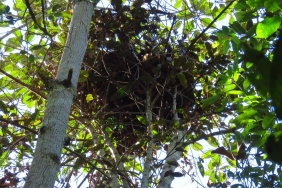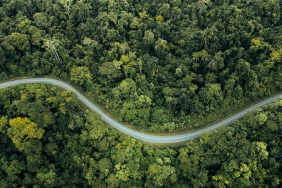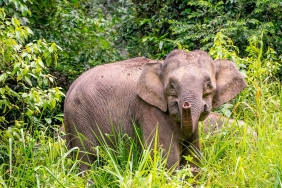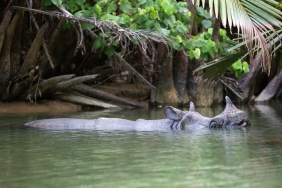ONE IN FIVE PEOPLE IN THE WORLD STILL DEPEND ON WILD SPECIES
Billions of people around the world depend on natural resources for food, energy, clothing, medicine, recreation, inspiration and many other essentials that contribute to human well-being. Yet the accelerating global biodiversity crisis, with millions of plant and animal species facing extinction, indirectly threatens human well-being.
A new report published by The Intergovernmental Science-Policy Platform on Biodiversity and Ecosystem Services (IPBES) offers knowledge, analysis and tools to build more sustainable use of nature for species, plants, animals, fungi and algae around the world. Sustainable use is when biodiversity and ecosystem functions are maintained while still being utilized for human well-being.
The IPBES Assessment Report on sustainable use of nature is the result of four years of analysis by 85 leading experts in the natural and social sciences, local cultures and customs, as well as 200 contributing authors, using more than 6,200 sources. The Summary Report was approved by representatives from 139 IPBES member countries in Bonn, Germany on July 8.
According to Dr. Jean- Marc Fromentin, who led the assessment with Dr. Marla R. Emery and Prof. Jonson Donaldson, rural communities in developing countries use more than 10,000 species of wildlife in nature directly for food due to lack of alternative sources to meet their needs. At least one in five people in the world still depend on the use of about 50,000 other species of wildlife in nature, both wild animal and plant species for utilization through various activities.
The report identifies five broad categories of utilization 'practices': fishing, gathering, logging, harvesting of terrestrial animals (including hunting), and non-extractive or observational practices.
For each practice, researchers looked at use functions such as food and feed, and other needs such as medicine, energy, recreation, ceremonial needs, learning and decoration. Over the past 20 years, the use of natural products has increased, but the sustainability of utilization varies, such as use for medicinal materials, and cutting down trees as an energy source.
The survival of about 12% of wild tree species is threatened by unsustainable logging; then unsustainable use is also one of the main threats to several plant groups especially cacti, cycads and orchids, and unsustainable hunting has been identified as a threat to 1,341 wild animals, especially mammal species - which have large-bodied specifications and have low breeding rates, in addition, hunting pressure is increasing.
The report also identifies drivers such as changing landscapes and seascapes; climate change; pollution and invasive alien species that impact the abundance and distribution of certain species in nature, increasing stress and posing new challenges to the local communities that utilize them. Over four decades, illegal trade in species in nature has also increased substantially in terms of volume, value and networks.
As part of its analysis, the report explores policies and tools that have been used in various contexts related to the sustainable use of species in nature. The seven key elements presented can be used as drivers of change in promoting the sustainable use of natural products to be scaled up across practices, regions and sectors:
- Inclusive and participatory policy choices
- Policy choices that recognize and support multiple forms of knowledge
- Policy instruments and tools that ensure fair and equitable distribution of costs and benefits
- Specific policy contexts
- Monitoring of illegal species and practices
- Aligned policy instruments at international, national, regional and local levels to maintain coherence and consistency with international obligations and take into account customary rules and norms
- Strong institutions, including customary institutions. And indigenous peoples manage fishing, gathering, harvesting of terrestrial animals and other uses of wild species on more than 38 million km2 of land, equivalent to about 40% of terrestrial conservation areas, in 87 countries.
The report concludes by examining a range of possible future scenarios for the use of species in nature, confirming that due to climate change, there is increasing demand for technological innovations that can support more efficient extractive practices, and are likely to present significant challenges for sustainable use in the future. Therefore, there is a need to identify practices that will help address these challenges.
In the fisheries sector, this will include correcting current inefficiencies; reducing illegal, unreported and unregulated fishing; reducing harmful financial subsidies; supporting small-scale fisheries; adapting to changes in ocean productivity due to climate change; and proactively creating effective transboundary institutions.
In the forestry sector, multi-use forest management and certification are needed; technological innovations to reduce waste in the manufacture of wood products; and economic and political initiatives that recognize the rights of indigenous peoples and local communities, including land tenure.
In most future scenarios that enable sustainable use of species in nature, the authors find that transformative change shares characteristics such as global integration of systems; equitable distribution of costs and benefits; changes in social values, cultural norms and preferences; and effective institutions and governance systems. Ambitious goals are considered necessary but not sufficient to drive transformative change.
According to this report, 4 out of 9 pages say that sustainable use of wild species in nature requires negotiation and adaptive management. It also requires a shared vision of sustainable use and transformative change in human-nature relations.
This IPBES report can serve as basic data for developed and developing countries to issue pro-environment policies and also work harder in protecting biodiversity. This is because it lays the foundation for the survival of their people.
Find more information on the IPBES Report at the following link:https://ipbes.net/media_release/Sustainable_Use_Assessment_Published





